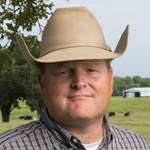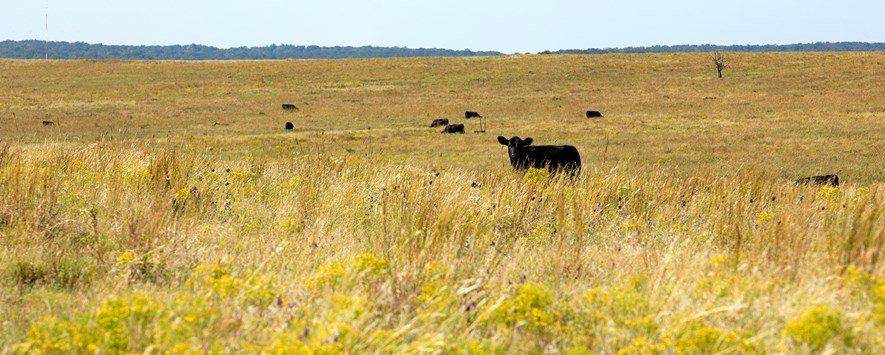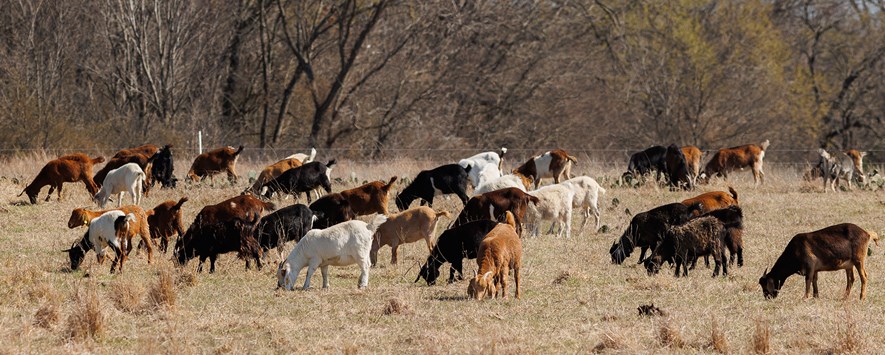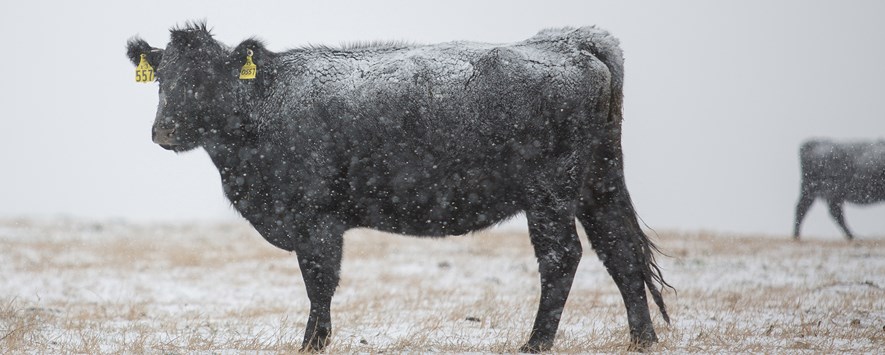In today’s agricultural climate of fluctuating markets, erratic weather patterns and growing social restlessness, the resolve of the American farmer and rancher has never been more tested. As stewards of the nation’s private working lands, many progressive producers are working to mitigate those uncertainties by refocusing efforts on the foundational building block of their operation: the soil resource. For most agricultural enterprises, success and long-term viability ultimately hinges on soil health.
For decades, the agriculture industry has focused, studied and ultimately understood the physical and chemical characteristics of our soil resource. However until recently, little emphasis has been placed on the biological constituents and their importance in a healthy, functional soil. As researchers work to better understand the complexities of soil health, further understanding tends to lead to more questions. Noble Research Institute has recently focused efforts to gain critical insight into these soil health questions and help producers understand their impacts. Today, Noble Research Institute is poised to deliver producer-focused solutions in the area of regenerative agriculture.

Principles, Not Practices
Regeneration is addressed by following principles that rebuild processes from the ground up rather than focusing on specific singular management practices. Maintaining a solid foundation with healthy soil is the cornerstone to any agricultural enterprise. Soil health is the cornerstone of regenerative agriculture and is often defined as, “the continued capacity of the soil to function as a vital, living ecosystem that sustains plants, animals and humans.” We often think of “soil health management” as a new strategy but it’s actually not. For instance, in 1949, Aldo Leopold in A Sand County Almanac stated, “Land, then, is not merely soil; it is a fountain of energy flowing through a circuit of soils, plants and animals.” Healthy soils with effective nutrient and hydrologic cycles were functioning well before man decided to manage them. However, agriculture in the early 1900s tended to focus more on plowing up the prairie soils with industrial technology and machinery rather than its ecology, thus soils were largely viewed as a medium to grow crops. For some, the Dust Bowl of the 1930s changed the perception or view of the soil. Fast forward to now and a lot has changed in how we “view” the soil. What has not changed is our responsibility as land stewards.
Noble Research Institute is poised to deliver producer-focused solutions in the area of regenerative agriculture.
Reducing Feed, Inorganic Fertilizer and Fuel Out of Necessity
For more than a decade, a regenerative movement has been taking the agriculture industry by storm. However, this movement was not born in a laboratory nor was it born by legislation. It was born by farmers and ranchers who wanted to do things differently. Sixty years ago, the agricultural industry was operating on cheap feed, cheap fertilizer and cheap fuel. During that time period, our industry and our science, focused on the chemical and physical characteristics of soils with little to no consideration of soil biological interactions. During this period, the prices of inputs eventually increased to the point at which they became unsustainable for many operations. Some farmers had to make a choice: continue doing what we have always done or find new ways to farm. Born out of equal parts necessity and frustration, some farmers began to experiment with farming techniques that limited the use of feed, inorganic fertilizer and fuel. They began to see that limiting or eliminating tillage reduced their fuel bill and using an ageless practice of “cover crops” began to keep the ground covered and provided numerous benefits to the soil. In essence, they were building a foundation of principles that we follow today in managing healthy soils.
Know Your Farm or Ranch
When applying these principles, it is important to also operate within your context. Know your environment and understand that no two farms or ranches are the same. The same could be said for ecological regions and major land resource areas. These principles should be applied within the context of each individual farm or ranch. Practices that provide positive results in North Dakota may not be the same combination of practices that are effective in Oklahoma. The aforementioned principles should be applied as strategies to guide the application of individual management practices. The practices (no-till, cover crops, etc.) are simply tools used to implement the principles.
“Land, then, is not merely soil; it is a fountain of energy flowing through a circuit of soils, plants and animals.” Aldo Leopold, 1949 Sand County Almanac
Looking for Tools
We begin to implement these principles into our operating plans, we look for tools to help us achieve these goals. Cover crops are commonly utilized in agronomic systems to meet several management goals, such as keeping the ground covered and adding biological diversity. Cover crops are an incredible tool and can be utilized to directly or indirectly meet any or all of the soil health management principles. Many producers have been utilizing mixed-species cover crops in cropland and pasture systems to increase diversity, increase organic matter, increase soil microbiological function, etc. However, with that said, you will notice that simply planting cover crops is not one of the principles. Cover crops are facilitators; they facilitate the producer’s ability to follow the soil health principles.
Soil Health Influences Water, Plants, Minerals and Animals
The primary goal of regenerative agriculture should be to improve soil health as it is a foundational precursor to the proper function of many ecological processes. The health of our landscapes and soil are interdependent. Our land’s condition is characterized by the functioning of both the soil and plant communities. Following these principles will allow the site’s production, health of the soil, and mineral and water cycles to greatly improve, ultimately creating an opportunity to regenerate the landscape.







